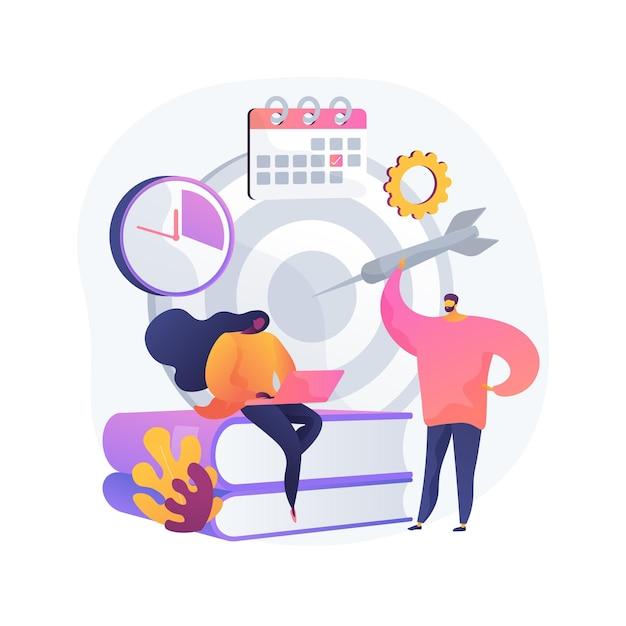Discipline is a vital aspect of maintaining order and ensuring productivity in the workplace. It involves enforcing rules and guidelines to address behavioral or performance issues. However, there are different approaches to disciplinary actions, namely positive discipline and progressive discipline. In this blog post, we will delve into the distinction between these two methods and understand how they contribute to a healthy work environment.
When managing disciplinary issues in your company, knowing the step-by-step procedures is crucial. We will explore the appropriate steps of discipline, demonstrating how to implement them effectively. Additionally, we will discuss how to show discipline at work and the benefits of using a progressive discipline system. By the end of this post, you’ll have a clear understanding of the key differences between positive and progressive discipline and be equipped with the knowledge to handle disciplinary challenges in a fair and efficient manner. Let’s get started!

The Difference Between Positive and Progressive Discipline
In the world of employee management, there are various methods of ensuring discipline and maintaining a productive work environment. Two common approaches are positive discipline and progressive discipline. While they may sound similar, these two methods have distinct characteristics that set them apart. So, let’s dive into what makes positive discipline different from progressive discipline.
Positive Discipline: Building Bridges to Success
Positive discipline is like that friendly yoga instructor who encourages you to stretch a little further without pushing you to the brink of pain. It’s all about promoting good behavior through a constructive approach. Rather than focusing on punishment or retribution, positive discipline aims to build bridges to success.
-
The Power of Reinforcement: In positive discipline, reinforcement takes the spotlight. It’s all about rewarding desired behavior to encourage its repetition. From praise and recognition to simple gestures of appreciation, positive discipline emphasizes the importance of positive reinforcement in shaping employee behavior.
-
Clear Expectations and Communication: To make positive discipline work its magic, clear expectations and open communication are essential. Setting expectations upfront and discussing them with employees ensures everyone is on the same page. Open lines of communication also allow room for feedback and proactive problem-solving.
-
Coaching Rather Than Punishing: The goal of positive discipline is not to punish but to coach employees towards better performance. When someone makes a mistake, a positive discipline approach involves sitting down with them, understanding the reason behind the slip-up, and identifying strategies to prevent it from happening again.
Progressive Discipline: The Slow and Steady Approach
Progressive discipline, on the other hand, has a different pace. It’s like that tortoise in the famous fable – slow and steady. This method focuses on addressing repeated or severe misconduct gradually while maintaining a fair process.
-
A Staircase of Consequences: With progressive discipline, consequences become more significant as misconduct continues. It usually involves a series of steps, such as verbal warnings, written warnings, suspension, and in extreme cases, termination. The idea is to give employees an opportunity to improve their behavior step by step.
-
Documentation Is Key: When it comes to progressive discipline, documentation plays a crucial role. Every step of the disciplinary process is well-documented, including the warnings given, dates, and outcomes. This documentation helps ensure fairness and provides a record of the employee’s journey through the disciplinary stages.
-
Making Space for Improvement: Progressive discipline recognizes that people can change and improve their behavior over time. This method allows employees to correct their mistakes and provides opportunities for growth. It’s about finding a balance between accountability and a supportive environment.
Key Takeaways
Positive discipline emphasizes constructive reinforcement, clear communication, and coaching methods to motivate employees towards success. On the other hand, progressive discipline follows a gradual approach, allowing employees to learn from their mistakes through a structured process of consequences.
Understanding the difference between positive and progressive discipline enables employers to choose the most suitable approach for managing their workforce effectively. Whether you prefer the friendly and encouraging vibes of positive discipline or the slow and steady progression of progressive discipline, the key is to ensure a fair and supportive environment that encourages growth and improvement among employees.

FAQ: What is the Difference Between Positive and Progressive Discipline
When it comes to managing disciplinary issues in a company, understanding the difference between positive and progressive discipline is essential. While both approaches aim to address employee misconduct or poor performance, they have distinct methodologies and outcomes. In this FAQ-style subsection, we will dive deeper into the step-by-step procedures for managing disciplinary issues, explore the features of positive and progressive discipline, and answer common questions in an engaging and informative manner.
What are the step-by-step procedures to manage disciplinary issues in your company
Managing disciplinary issues can be a challenging task, but with a clear procedure in place, the process becomes more straightforward. Here’s a step-by-step guide on how to handle disciplinary issues effectively:
-
Identify the problem: The first step is to identify the specific issue at hand and gather all the relevant information, such as evidence, witness statements, and documentation.
-
Communicate with the employee: Schedule a private meeting with the employee involved to discuss the issue, allowing them to explain their side of the story.
-
Conduct a fair investigation: If necessary, conduct a thorough investigation to gather additional evidence and ensure fairness and objectivity.
-
Determine appropriate disciplinary action: Based on the findings of the investigation, determine the appropriate disciplinary action, taking into account company policies and any applicable laws.
-
Communicate the consequences: Meet with the employee again to inform them of the disciplinary action being taken, ensuring clear communication regarding expectations and consequences.
-
Document the process: Keep detailed records of each step taken throughout the disciplinary process, including meetings, warnings issued, and any improvement plans.
-
Monitor and follow up: After implementing the disciplinary action, regularly monitor the employee’s progress and provide necessary support while ensuring compliance with the established expectations.
What are the steps of discipline
Discipline, whether positive or progressive, involves a series of steps to address employee misconduct or poor performance. The key steps in the discipline process are as follows:
-
Counseling or verbal warning: The initial step usually involves counseling or giving a verbal warning to the employee to address the issue and make them aware of the consequences.
-
Written warning: If the behavior or performance issue persists, a written warning is issued, clearly documenting the problem, expectations, and necessary actions to improve.
-
Performance improvement plan (PIP): In more severe cases, a PIP may be implemented, outlining specific objectives, timelines, and support mechanisms to help the employee improve.
-
Suspension: In situations where the employee’s behavior or performance does not improve despite previous interventions, a temporary suspension may be imposed, emphasizing the gravity of the situation.
-
Termination: If all other attempts fail, termination may be the final outcome. However, termination should be considered as a last resort, and efforts should be made to exhaust all possible avenues for improvement.
How do you show discipline at work
Displaying discipline at work is crucial for maintaining a healthy and productive work environment. Here are a few ways to demonstrate discipline as an employee:
-
Punctuality: Arriving at work on time and meeting deadlines consistently shows discipline and respect for others’ time.
-
Professionalism: Conducting oneself in a professional manner, adhering to company policies and ethical standards, reflects discipline.
-
Accountability: Taking responsibility for one’s actions, admitting mistakes, and working towards solutions shows discipline and growth.
-
Self-motivation: Proactively seeking ways to improve skills, staying focused on tasks, and being self-driven demonstrate discipline and determination.
-
Time management: Efficiently prioritizing tasks, avoiding distractions, and meeting deadlines exhibit discipline and ensure productivity.
Remember, discipline is not about being rigid or controlling, but rather about maintaining a sense of structure and focus to achieve individual and collective success.
How does the progressive discipline system work
Progressive discipline is a systematic approach to address employee misconduct or poor performance. Unlike positive discipline, which focuses on rewarding good behavior, progressive discipline aims to guide employees towards improvement through a series of escalating consequences. Here’s an overview of how the progressive discipline system generally works:
-
Verbal warning or counseling: The initial step involves a private conversation with the employee, expressing concerns and offering guidance.
-
Written warning: Should the behavior persist, a written warning is issued, documenting the problem and outlining the expected improvements.
-
Final warning or suspension: If the employee fails to rectify the issue, a final written warning or temporary suspension may be imposed, emphasizing the need for immediate improvement.
-
Termination: In cases where all prior interventions have failed, termination may be the ultimate consequence. However, termination should be considered judiciously and handled with fairness.
It is essential for organizations to have clear policies and guidelines regarding progressive discipline, ensuring consistency and fairness throughout the process.
What is the difference between positive and progressive discipline
Positive discipline and progressive discipline differ primarily in their underlying philosophies and approaches towards addressing employee issues.
Positive discipline focuses on encouraging and reinforcing positive behaviors while providing constructive feedback. This approach emphasizes recognition, rewards, and coaching to motivate employees towards improvement. It aims to create a supportive work environment where employees feel valued and inspired to meet expectations.
On the other hand, progressive discipline follows a structured system of consequences for misconduct or poor performance. It begins with verbal warnings or counseling and gradually intensifies the disciplinary action if the issues persist. The goal of progressive discipline is to shape behavior through identified steps, providing opportunities for employees to rectify their actions and meet performance standards.
Ultimately, the choice between positive and progressive discipline depends on the organizational culture, the severity of the issue at hand, and the desired outcomes for addressing and resolving employee concerns.
How many steps are in the progressive discipline
The number of steps in the progressive discipline system may vary depending on the organization’s policies and the severity of the issue. While some organizations may have a four-step process (verbal counseling, written warning, final warning/suspension, termination), others may choose to include additional intermediate steps, such as a second written warning or a performance improvement plan (PIP).
It is crucial for organizations to design their progressive discipline system to align with their specific needs, providing an effective framework for addressing employee misconduct or poor performance while maintaining fairness and consistency.
What is a benefit to using the progressive discipline system
Implementing a progressive discipline system offers several benefits for organizations:
-
Structure and consistency: The clearly defined steps of progressive discipline provide a structured framework, ensuring consistency in addressing employee issues and maintaining fairness throughout the process.
-
Opportunity for improvement: Progressive discipline allows employees to understand the consequences of their actions and provides them with opportunities to rectify their behavior or performance, fostering growth and development.
-
Legal compliance: Following a progressive discipline system helps organizations adhere to legal requirements and mitigate the risk of wrongful termination claims by demonstrating that appropriate interventions were carried out.
-
Employee morale and motivation: By providing clear expectations and consequences, progressive discipline can enhance employee morale, as all employees know the standards they are expected to meet. It also motivates employees to improve, knowing that there is a pathway for redemption.
By utilizing the progressive discipline system effectively, organizations can promote a positive work environment, encourage accountability, and facilitate employee growth and success.
Understanding the difference between positive and progressive discipline is essential in effectively managing disciplinary issues within a company. By following the appropriate step-by-step procedures, organizations can address misconduct or poor performance while fostering a positive and productive work environment. Whether employing positive reinforcement or implementing a progressive discipline system, the goal remains the same: guiding employees towards improvement, growth, and success.
So, embrace discipline and create an environment where employees flourish, knowing that there’s always room for growth, improvement, and perhaps a bit of humorous self-reflection along the way.
